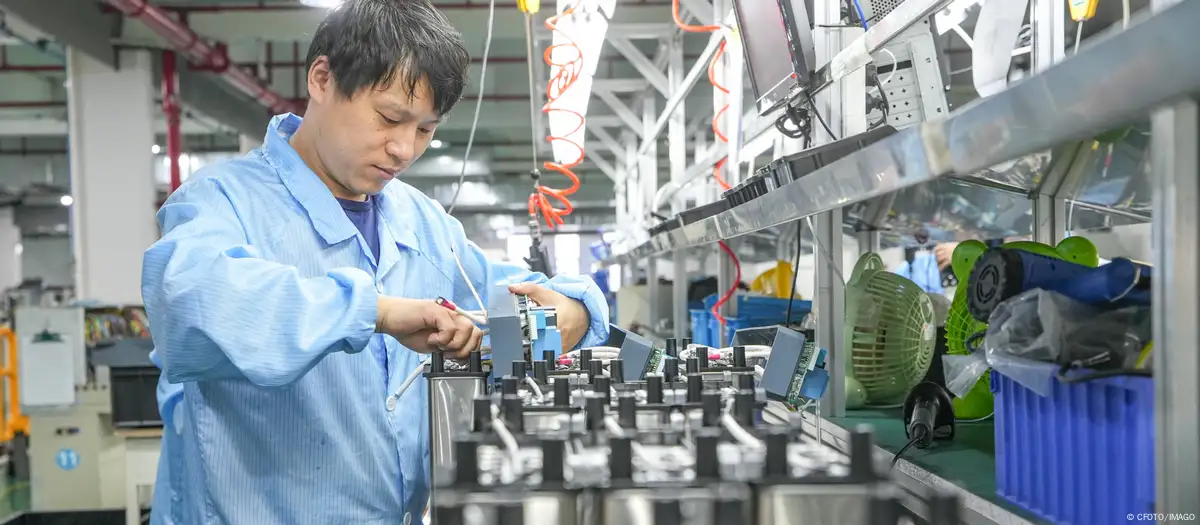
Communist Party meets in Beijing to decide the direction of the Chinese economy for the next five years. Given the current geopolitical situation, domestic consumption must remain in the background.
Approximately 200 members of the Chinese Communist Party Central Committee meet this week in Beijing for the body’s fourth plenary session. The closed-door meeting from October 20th to 24th has at the top of the agenda the discussion of the next five-year plan, designed for the period from 2026 to 2030 and with official approval scheduled for the beginning of next year.
Five-year plans have a long tradition, dating back almost to the founding of the People’s Republic of China, with the first in force from 1953 to 1957. The next will be the fifteenth of these programs, whose objective is to regulate Chinese economic development at the national level.
Currently, there are many structural problems in the Chinese economy that need to be resolved. For decades, the world’s second largest economy was driven by foreign trade and investment in infrastructure, while the third pillar — domestic consumption — was constantly neglected.
“If we look at the last few years, we still see double-digit growth in investment in the manufacturing sector,” says Alexander Brown, an analyst at the Berlin-based think tank Mercator Institute for China Studies (Merics). “However, the service sectors are not receiving as much money. This is the reason for the rather pessimistic mood among Chinese consumers. Even so, Beijing is expected to continue prioritizing spending on industrial policy, given the current geopolitical situation and China’s resilience objective.”
Focus on geopolitical competition
This resilience — that of its own economy — is very important to Beijing. This goal gains even more support after episodes like the one a few days ago, when US President Donald Trump once again threatened to impose massive tariffs on imports from China and tighten restrictions on the export of essential high-technology products. Beijing sees this as proof that such concerns are justified.
Chen Bo, a researcher at the East Asia Institute at the National University of Singapore, explains that the Chinese are currently more concerned about geopolitical competition than structural problems. “The new five-year plan will place strong emphasis on promoting high-tech research and industrial development. Manufacturing remains the most important factor in the country’s political power. In the event of conflict, after all, it would be manufacturing, not the services sector, that would be of utmost importance,” he said in an interview with the Reuters news agency
In a speech in July, President Xi Jinping emphasized that “the world is experiencing the most profound changes in a century, with the scientific and technological revolution and competition between great powers becoming increasingly interconnected.” On the occasion, he also reiterated his objective for China to assume a strategic leadership position in global scientific and technological competition.
The country has already risen to the global forefront in areas such as electromobility and renewable energy. With the exception of some sectors — such as semiconductors and commercial aviation — China concentrates almost its entire supply chain within its borders. Beijing has also been steadily increasing its investments in high-tech industries in order to further strengthen its economic sovereignty and further reduce its dependence.
When will consumption be covered?
China, however, has not completely abandoned efforts to resolve its structural problems. At a meeting in September, the National People’s Congress discussed how to increase families’ disposable income and, consequently, the share of consumption in the economy. Currently, private consumption in China represents about 40% of economic output, much less than the average of 60% in Western countries. In the USA, this share reaches 70%. Some Chinese think tanks propose increasing private consumption to 50% in ten years.
In recent months, Beijing has already announced several measures in this regard, such as consumption subsidies, increases in pensions and childcare benefits, in addition to modest improvements in social security. For analyst Alexander Brown, from Merics, it is clear that such actions were practically “forced” in the face of problems such as demographic change, excess production capacity and a drop in exports. “I believe that measures of this type – although not many – will continue to emerge repeatedly over the next five years.”
Larry Hu, chief China economist at Macquarie Group, says only in a consumption-led growth model could enough jobs be created in the high-skilled, well-paid service sectors for which millions of young Chinese people have been trained. “If it relies exclusively on external demand without stimulating domestic consumption, China will face unemployment and deflation. If this situation lasts just one or two years, it is bearable. But in the long run, it will definitely cause problems,” he told Reuters.
However, Larry Hu believes that Beijing will only consider stimulating domestic consumption when external demand falls so sharply as to compromise its growth goals.
First the top of the world; then internal consumption
With export and infrastructure drivers faltering, boosting domestic consumption is more urgent than ever. But this is not cheap, especially at a time when Beijing’s fiscal room for maneuver is already limited due to the housing crisis, high debt and lower growth rate.
According to Citigroup, one of the main American banks, the Chinese government would need to invest 20 trillion yuan (approximately R$15 trillion) over the next five years to effectively deal with the imbalance between supply and demand in the Chinese economy. This amount corresponds to 15% of Chinese Gross Domestic Product in 2024.
Alexander Brown therefore predicts that those in Beijing are likely to continue their current economic strategy. “They will continue to prioritize investing resources in technological sectors, where there is a chance of achieving global leadership. The expectation is that these achievements will generate a lot of money. This money — or rather, the resulting tax revenue — can then be distributed throughout the economic system.”
Originally published by DW on 10/21/2025
Por Mu Cui
Source: https://www.ocafezinho.com/2025/10/22/china-aposta-em-alta-tecnologia-como-estrategia-geopolitica/

